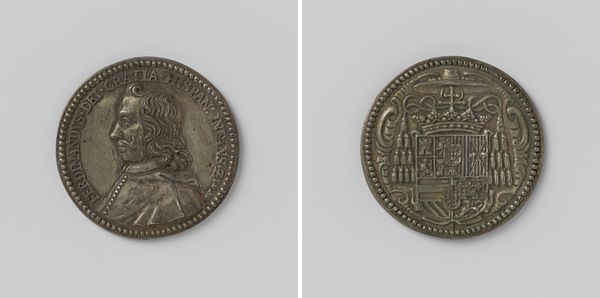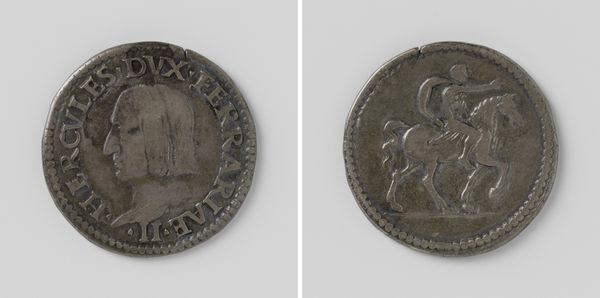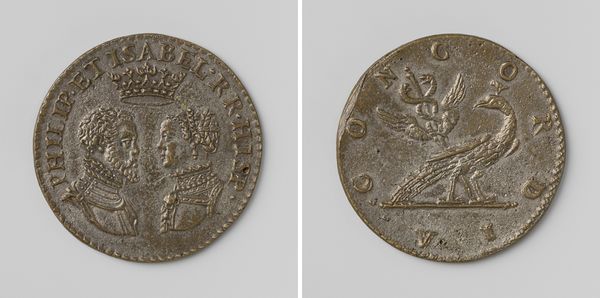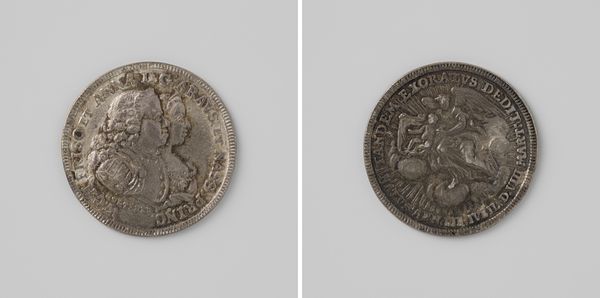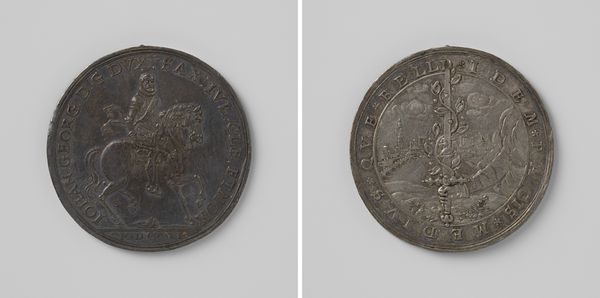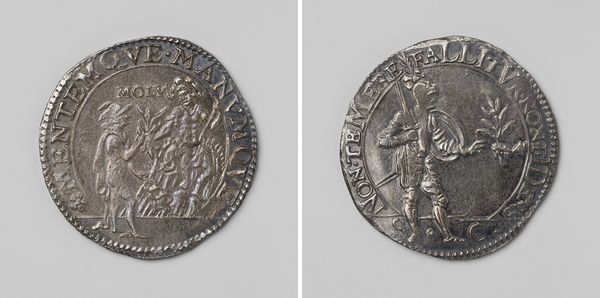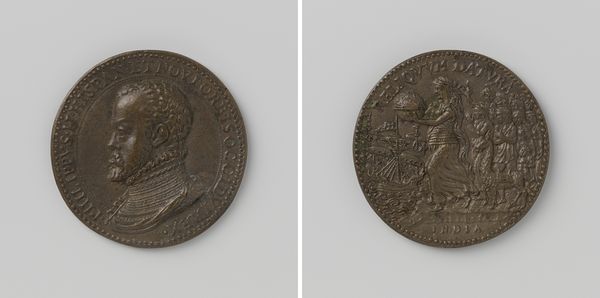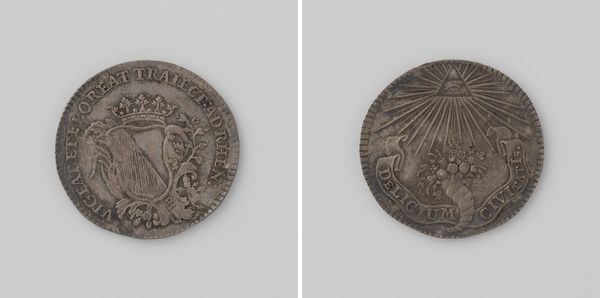
Vrede van Le Cateau-Cambresis, ter ere van Filips II van Spanje Possibly 1559
0:00
0:00
metal, sculpture
#
portrait
#
medal
#
metal
#
sculpture
#
11_renaissance
#
sculpture
#
history-painting
Dimensions: diameter 3.8 cm, weight 29.64 gr
Copyright: Rijks Museum: Open Domain
Editor: This artwork, a medal possibly from 1559 by Gianpaolo Poggini, commemorates the Peace of Cateau-Cambrésis. One side depicts a portrait of Philip II of Spain, the other appears to allegorically represent peace. What symbols do you find particularly striking in this work? Curator: The medal functions as more than mere representation; it attempts to solidify cultural memory. Notice how Philip's profile echoes classical coin portraits, instantly aligning him with the gravitas of Roman emperors, while also projecting power over the 'new world' indicated in the latin inscription. Editor: Yes, I noticed that immediately with the Latin! And on the other side, the female figure seems to be warding off war. Is that Pax, the Roman goddess? Curator: Indeed. The goddess Pax appears amidst discarded weapons, ushering in prosperity. The closed temple with floral garlands possibly implies a renewed sense of security and restored religious practices. Even the act of composing this medal reflects a desire for harmony. Do you find that symbolism translates effectively across time? Editor: Absolutely. The imagery is clear and powerful, communicating peace through universally understood symbols of war and rebuilding, ensuring this moment is forever imprinted in our memory. What strikes me is the power of the portrait to convey cultural values of leadership. Curator: Precisely. It highlights the enduring strength and importance of symbolism. The intent of such visual messaging shaped much of early-modern European self-representation, a reminder that art can solidify ideological aims and beliefs in lasting forms. Editor: I learned something new! I’ll definitely look more closely at these symbols from now on! Thanks! Curator: My pleasure. Considering symbolic continuities broadens our grasp of how visual strategies shape societal perceptions over centuries.
Comments
No comments
Be the first to comment and join the conversation on the ultimate creative platform.

